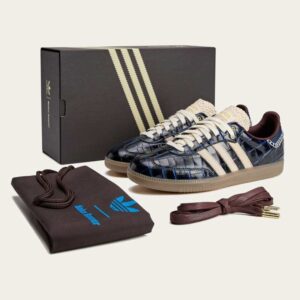In the early 2000s, Marc Ecko’s brand embodied a gritty, aspirational edge in streetwear. Known for graffiti-inspired aesthetics, oversized cuts, and bold graphics, Ecko became synonymous with a generation of streetwear enthusiasts who craved individuality and authenticity. Marc Ecko’s Cut & Sew line added a level of sophistication to street style, blending graffiti roots with tailored aesthetics. Now, over two decades later, a revival of Marc Ecko Cut & Sew hoodies seems both fitting and timely. As the fashion world continues to embrace nostalgia, could Marc Ecko’s Cut & Sew hoodies be making a comeback?
In this article, we’ll explore the unique attributes of Marc Ecko’s Cut & Sew hoodies, the brand’s historical impact, and why a resurgence could resonate in today’s streetwear culture.
The Rise and Appeal of Marc Ecko Cut & Sew
In the 1990s, Marc Ecko launched Ecko Unlimited, which quickly gained traction for its bold graffiti-inspired designs and hip-hop aesthetic. The brand’s oversized fits, rhinestone accents, and iconic rhino logo were as much a staple in streetwear as Timberlands and oversized jerseys. But by the early 2000s, Ecko saw a need for a more refined line that combined street culture with elevated design principles. This led to the birth of Cut & Sew, a sub-brand that maintained Ecko’s gritty appeal but catered to a crowd that wanted something more tailored and sophisticated.
Ecko Cut & Sew hoodies in particular were a blend of comfort and style. Made with high-quality materials and finished with intricate detailing—like embroidered logos, tailored stitching, and custom prints—these hoodies could transition from the streets to more polished settings. They allowed fans of streetwear to wear something bold but with a touch of sophistication.
Why Cut & Sew Hoodies Fell Out of Favor
Despite Ecko’s influence in the early 2000s, the brand fell out of popularity toward the end of the decade. Shifts in streetwear trends, competition from newer brands, and the rapid rise of high-end streetwear labels like Supreme, Stüssy, and Off-White left Ecko struggling to remain relevant. The brand’s association with early 2000s style—while iconic—was not adaptable enough for the evolving tastes of a younger audience.
Additionally, Ecko Unlimited and Cut & Sew suffered from overexposure and market saturation. The ubiquity of Ecko gear in malls and discount retailers diluted its appeal, making it less desirable to those seeking exclusivity. The same oversized hoodies and graffiti-inspired graphics that once felt edgy became overly familiar, losing their novelty. By the mid-2010s, the brand was relegated to clearance racks, its influence largely forgotten as streetwear underwent another revolution.
Why Now? The Nostalgic Appeal of Early 2000s Streetwear
Fashion is cyclical, and in recent years, there’s been a resurgence of early 2000s fashion. Low-rise jeans, cargo pants, and oversized hoodies are making their way back into mainstream fashion. Nostalgia has become a driving force, with Millennials and Gen Z rediscovering the brands and styles that shaped their early fashion memories. Marc Ecko’s Cut & Sew line falls into this category, representing a unique moment in streetwear that appeals to the current trend of “vintage” street style.
For many, Marc Ecko Cut & Sew hoodies hold a sentimental value. These pieces were more than just clothing—they were symbols of individuality and rebellion. As modern streetwear brands like Carhartt WIP, Champion, and even luxury labels dabble in the oversized hoodie trend, the appeal of an Ecko Cut & Sew revival becomes clear. People want something that feels authentic to a time when streetwear was still underground, and Marc Ecko offers that authenticity.
The Quality and Craftsmanship of Cut & Sew Hoodies
Part of what set Cut & Sew hoodies apart was their quality and attention to detail. Unlike the mass-produced hoodies of today, Cut & Sew hoodies featured unique embellishments like embroidered designs, custom patches, and complex graphic patterns. The brand used quality materials, which gave the garments durability and made them a worthwhile investment. Each hoodie felt like it had a story, whether through its graphics or its construction.
For today’s streetwear consumers, quality is increasingly important. Many are turning to vintage pieces not only for the nostalgia factor but for the craftsmanship that older streetwear pieces often embody. In this context, Marc Ecko Cut & Sew hoodies could appeal to an audience looking for something different from the current landscape of fast-fashion hoodies. The Cut & Sew line’s attention to quality and artistry makes it ripe for a comeback in a market that’s rediscovering the value of well-made garments.
The Potential for a Sustainable Revival
With sustainability becoming a cornerstone of modern fashion, a Marc Ecko Cut & Sew resurgence could benefit from promoting the reuse and recycling of vintage pieces. Many fashion consumers are looking for ways to avoid buying brand-new items, instead favoring secondhand and vintage pieces that minimize environmental impact. In this sense, reviving Cut & Sew could align with the sustainable fashion movement.
Brands like Patagonia, Carhartt, and even Nike have embraced circular fashion models, offering repair programs and encouraging secondhand markets. Marc Ecko could adopt a similar model, promoting resale platforms that sell authenticated vintage Cut & Sew hoodies or even launching a line of reissued styles. By tapping into both nostalgia and sustainability, Cut & Sew hoodies could find a unique space in the market.
Modernizing the Cut & Sew Hoodie
If Ecko were to reissue Cut & Sew hoodies, a few updates could enhance their appeal. Modern streetwear has seen innovations in fit, materials, and technology, with many brands experimenting with eco-friendly fabrics, smart textiles, and gender-neutral fits. A new line of Cut & Sew hoodies could incorporate these elements, making them more relevant to today’s fashion landscape while staying true to their roots.
For instance, Ecko could experiment with organic cotton, recycled fibers, or water-based dyes to meet modern standards of sustainability. Modern fits that balance the oversized look with a more tailored silhouette could appeal to those who want a refined aesthetic without sacrificing the nostalgic appeal of early 2000s styles. Updates to graphics, logos, or collaborations with contemporary artists could also give Cut & Sew hoodies a modern edge, appealing to today’s audience while honoring the brand’s legacy.
Why Cut & Sew Could Thrive in Today’s Streetwear Market
Marc Ecko Cut & Sew hoodies have a distinct identity that could stand out amid today’s streetwear trends. With so many brands pursuing minimalist aesthetics or high-end collaborations, there’s an opportunity for Cut & Sew to bring back bold, graffiti-inspired streetwear with a refined twist. Its unique blend of street and sophistication—symbolized by tailored hoodies with gritty, urban designs—could attract those looking for something that feels both nostalgic and fresh.
Moreover, collaborations could play a vital role in Cut & Sew’s potential resurgence. By partnering with contemporary streetwear icons, artists, or influencers, Ecko could reintroduce the brand to a new audience. Collaborations with graffiti artists, musicians, or even luxury brands could re-establish Ecko’s place in the streetwear ecosystem.
The Cultural Impression of a Marc Ecko Comeback
In the early 2000s, Marc Ecko influenced a generation of streetwear enthusiasts who grew up idolizing hip-hop and graffiti culture. A Cut & Sew revival could bring this cultural impact full circle, resonating with both those who remember the brand’s heyday and younger generations looking to reconnect with the roots of streetwear. The cultural cachet of Cut & Sew goes beyond clothing; it’s a reminder of a time when streetwear was about more than just fashion—it was about art, identity, and rebellion.
A Cut & Sew comeback could also reignite interest in graffiti culture and underground aesthetics, shedding light on an important chapter in fashion history that’s often overlooked. As streetwear continues to evolve, the return of Ecko Cut & Sew could serve as a bridge between the past and the present, bringing an authentic sense of history and heritage to a market often driven by newness.
The Challenges Ahead
While a Marc Ecko Cut & Sew revival seems promising, there are challenges to consider. The streetwear market is more crowded than ever, with new brands and connections emerging constantly. To succeed, Cut & Sew would need to differentiate itself not only through nostalgia but also through innovation. Embracing digital marketing, creating engaging social media content, and tapping into online communities could be key to capturing the interest of today’s fashion consumers.
Additionally, finding the right balance between honoring the brand’s heritage and modernizing its designs will be essential. Today’s consumers are savvy and selective, and they expect quality, authenticity, and relevance. If Cut & Sew were to relaunch without addressing these expectations, it could risk feeling outdated rather than nostalgic.
Final Thoughts: Could Cut & Sew Hoodies Make a Comeback?
The potential for Marc Ecko Cut & Sew hoodies to make a comeback is promising, especially in a fashion world increasingly driven by nostalgia and a longing for authenticity. With a renewed focus on quality, sustainability, and modern design elements, Cut & Sew could recapture the hearts of both its original fans and a new generation of streetwear enthusiasts.
In a time when fashion often feels homogenized, Cut & Sew offers something uniquely rooted in streetwear’s evolution. By blending the best of both street and tailored aesthetics, Marc Ecko’s Cut & Sew hoodies could reclaim their place as a cultural icon, reminding us that sometimes, the past still has a lot to offer.
No comments yet.







